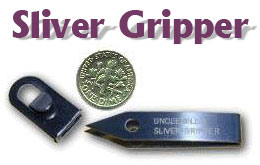With all these new interesting national celebration days like pirate day and toilet day (yes toilet day), I forgot about national grandparents day back in September. Though my grandparents are gone, I still think of them often. Especially “Uncle Bill!”
I still remember the first time that I saw my grandfather’s work room for the tweezers down in his basement. It was a tiny room behind the stair case and next to the extra freezer. I’d always wondered what was behind that closed door.
As we walked through the door there was so much metal in the room on ever shelf and the small table, yet everything was in order. He let me make my own tweezer that day which, for an eight year old, was the most exciting thing ever! He did the bending of the mental, but I cut the tip with the hacksaw.
At this point, the tweezers were already being produced by El Mar. Co, but my grandfather was very much a part of the production. Once he died in 2000, my parents would travel to Connecticut from California to make sure that things were up to par, while also visiting family.
The business was just a hobby for my grandfather after retirement; he was an engineer who loved the many wonders of life. I think that he would really enjoy seeing how the business has continued on the way it has. We sell all the way to Japan from the US and many countries in between like South Korea, Australia, France, and more. He was an amazing man and I will never forget the fun times we had.







